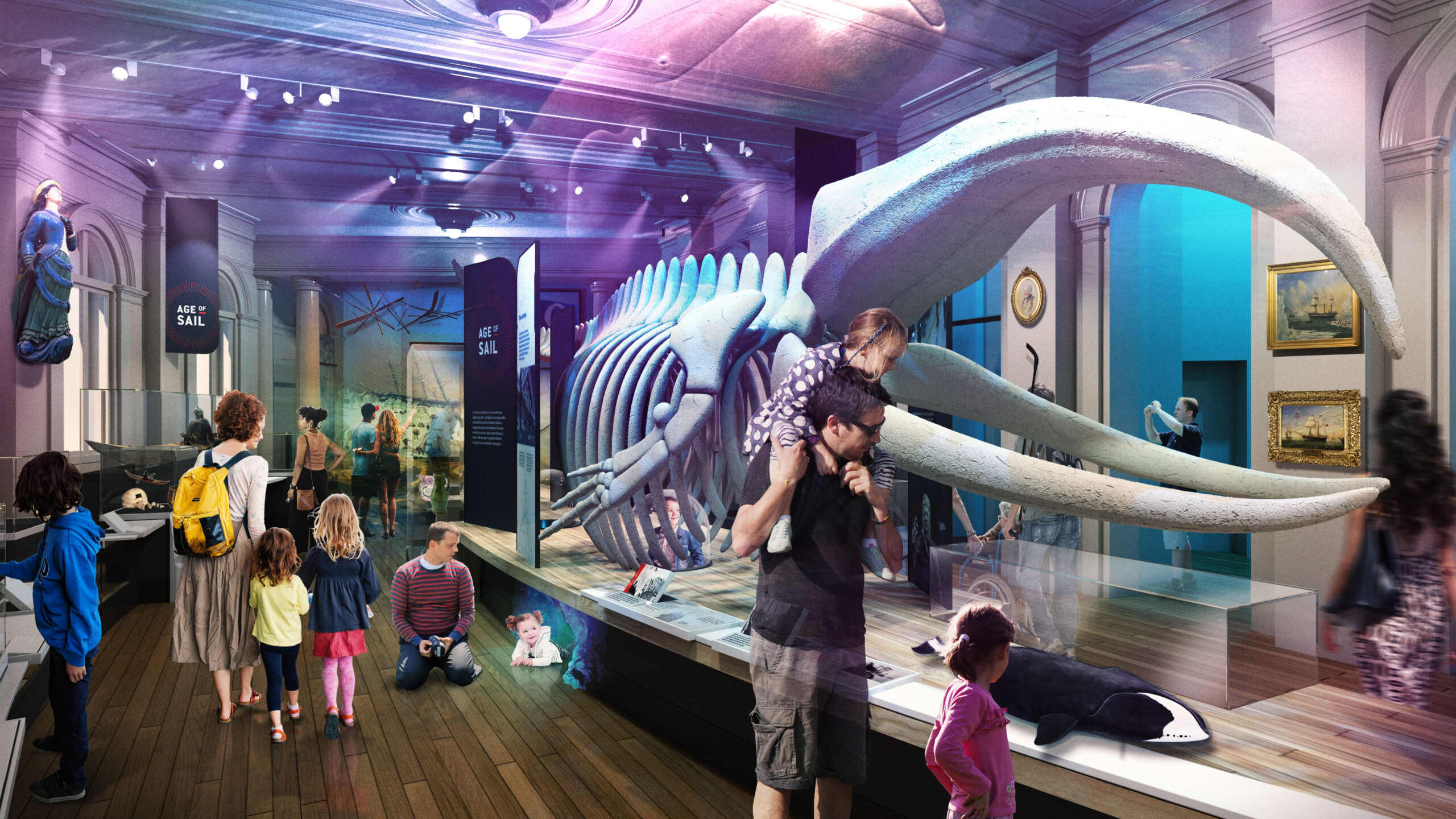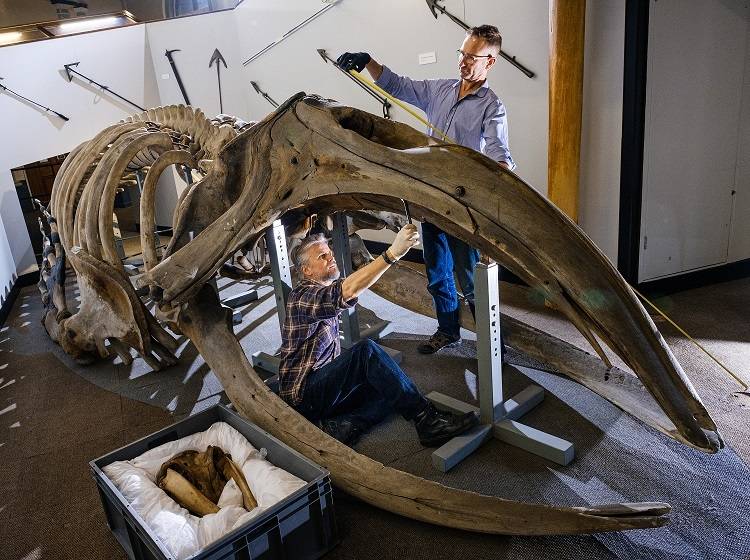Work to carefully dismantle and move the skeleton of a juvenile North Atlantic right whale, the largest item at Hull’s Maritime Museum, is now underway.
The fragile skeleton, that hasn’t moved for 45 years and seven other whale skeletons are the first objects to be moved to make way for a £12m refurbishment, part of the Hull Maritime project to revitalise Hull’s rich maritime heritage. The 50,000 strong maritime collection will also need to be placed into long-term storage.
The 40ft right whale was tragically caught by a 78 year-old retired whaling captain, along with its mother near the coast of New York in 1907.
Before being placed into secure storage, the skeletons will receive conservation treatment, to ensure they are in the best possible condition for when they return to a newly refurbished museum and showcase their global significance.
The bones of the 110-year-old whale currently lie on the museum floor. In contrast, the new displays will celebrate this magnificent creature which still swims the oceans today.
The difficult task is being undertaken by Nigel Larkin Ltd, specialists in conservation and curation of skeleton materials and has in recent years moved and conserved several whale skeletons.
Councillor Daren Hale, Portfolio Holder for Economic Investment, Regeneration and Planning, Land and Property, said: “This is an important milestone in order to prepare the museum for its refurbishment.
“The whale and its tragic story will take centre stage within the new displays and exhibitions and in ways you have never seen before, educating visitors about their plight.
“This refurbishment to make this a building fit for the 21st century will not only tell the story of the building but create a fitting home for our exceptional collections and the stories they tell.”

Stathis Tsolis, Conservation and Engagement Officer at Hull Maritime Museum, said: “The whale is well-remembered and cherished by many people visiting the museum over the last four decades and it is about to receive some much needed care and conservation.
“North Atlantic right whales are currently endangered, with only an estimated 400 left. These days the threat is largely from ship collisions and entanglement in fishing gear.
“The rarity of this animal adds to the global significance of our specimen, which will hopefully change as time goes by. May the day come when skeletons of right whales are not so rare and important.”
Nigel Larkin, whale conservator, said: “The museum has an important and fascinating collection that tells the story of Hull’s unique maritime heritage.
“Cleaning and conserving such historic specimens is always a pleasure. We look forward to returning the whale skeletons cleaner, in better condition, and mounted ready for installation in the newly refurbished galleries.”
The significant investment, funded by the National Lottery Heritage Fund and Hull City Council, will see exciting changes at the Grade II* Hull Maritime Museum, the Dock Office Chambers, the North End Shipyard and two historic vessels, the Arctic Corsair and Spurn Lightship.
For more information on the Hull Maritime project, visit maritimehull.co.uk
